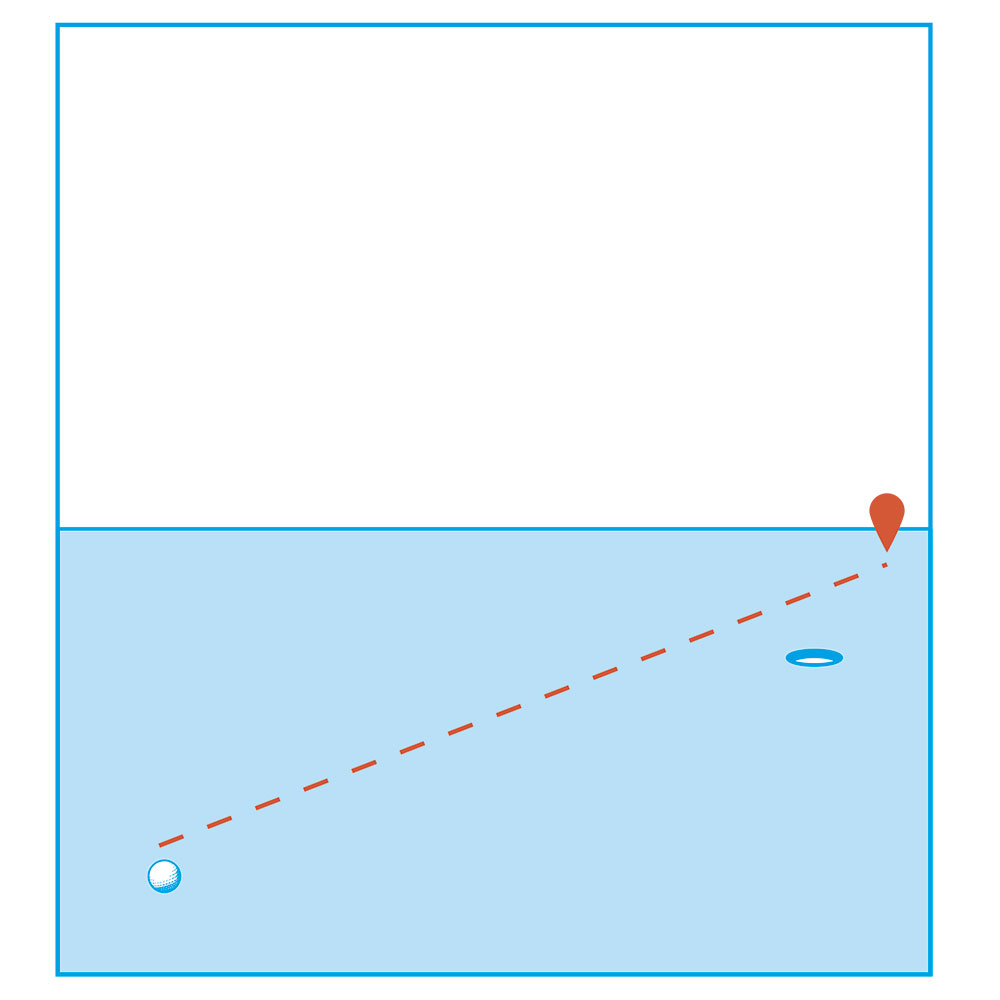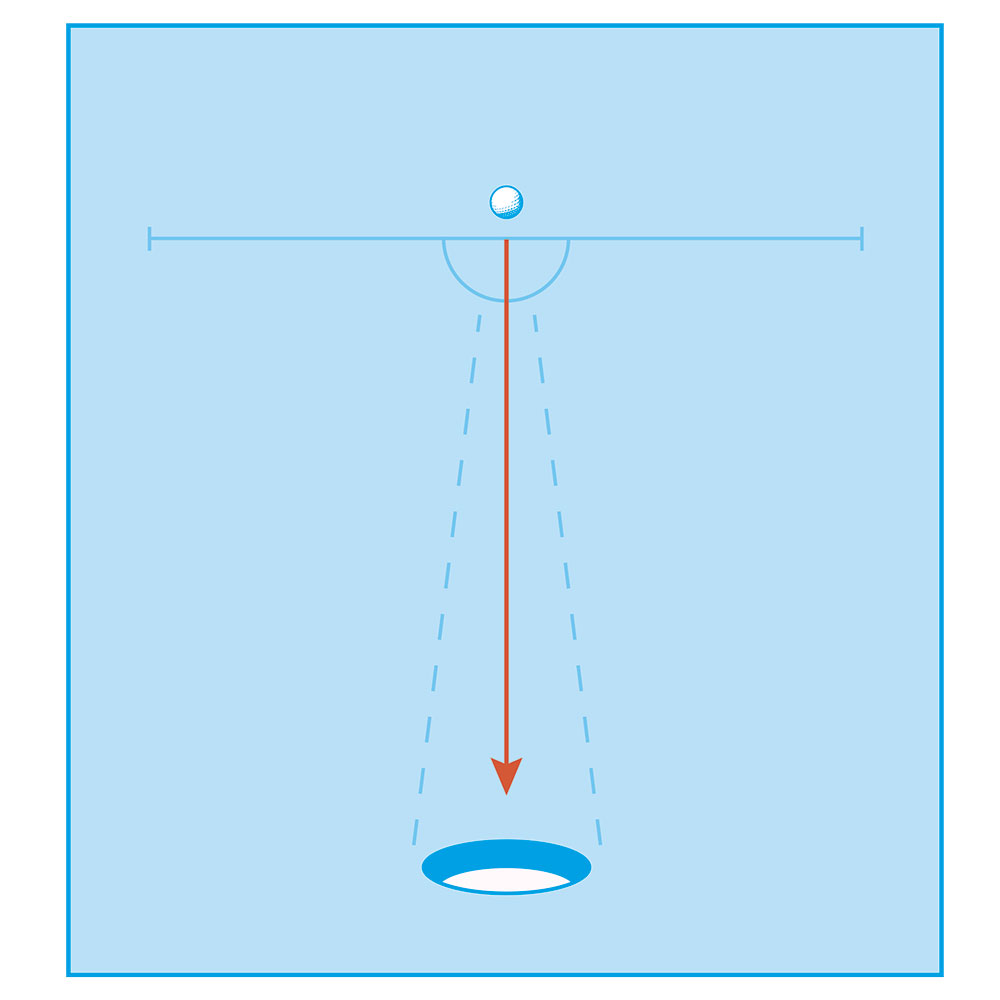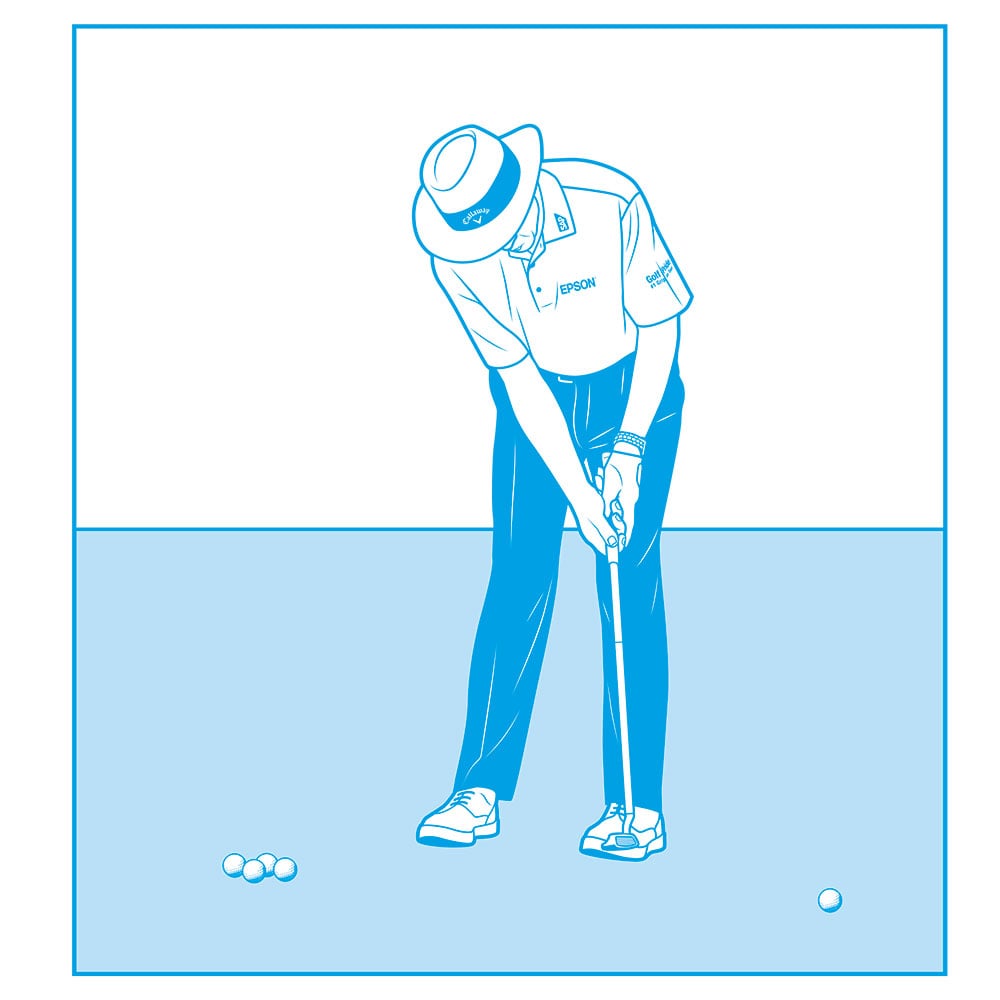THE biggest problem amateurs have with breaking putts is that they really don’t practise them all that much. Even golfers who roll a few before they go out to play usually stick to straight-and-flat scenarios. Rarely will you have a putt of any considerable length that doesn’t break at least a ball or two – and usually a lot more. If you’re struggling to hole these, or at least get the ball close enough for tap-ins, use these four steps to improve your putting stats.
1. Double Up

Experienced golfers talk about missing on the “pro” side of the hole, meaning they overestimated the amount of break on a putt. Amateurs rarely miss on the pro side because they underestimate the amount of curve. Try doubling the amount you think the putt will break.
2. Straighten Up

A handy way to deal with breaking putts is to treat them like you’ve got a straight putt. You can do that by setting up to the apex of the break like it’s the hole. Then putt straight at the apex. Gravity will take care of the curve towards the cup.
3. Change Up

The slope that determines the break also determines whether the ball will slow down or speed up once it reaches that area of the green. That means you have to hit the putt harder or softer than if it were a flat trip to the hole. Be sure to factor that change of speed into your read.
4. Toughen Up

The putts that give right-handers the most trouble are the ones that break left to right – like a slice. Those are the ones you should be practising as much as you can. Try them uphill and downhill. If you’re holing these, you’ll be a lot more confident with big-breaking putts on the course.




